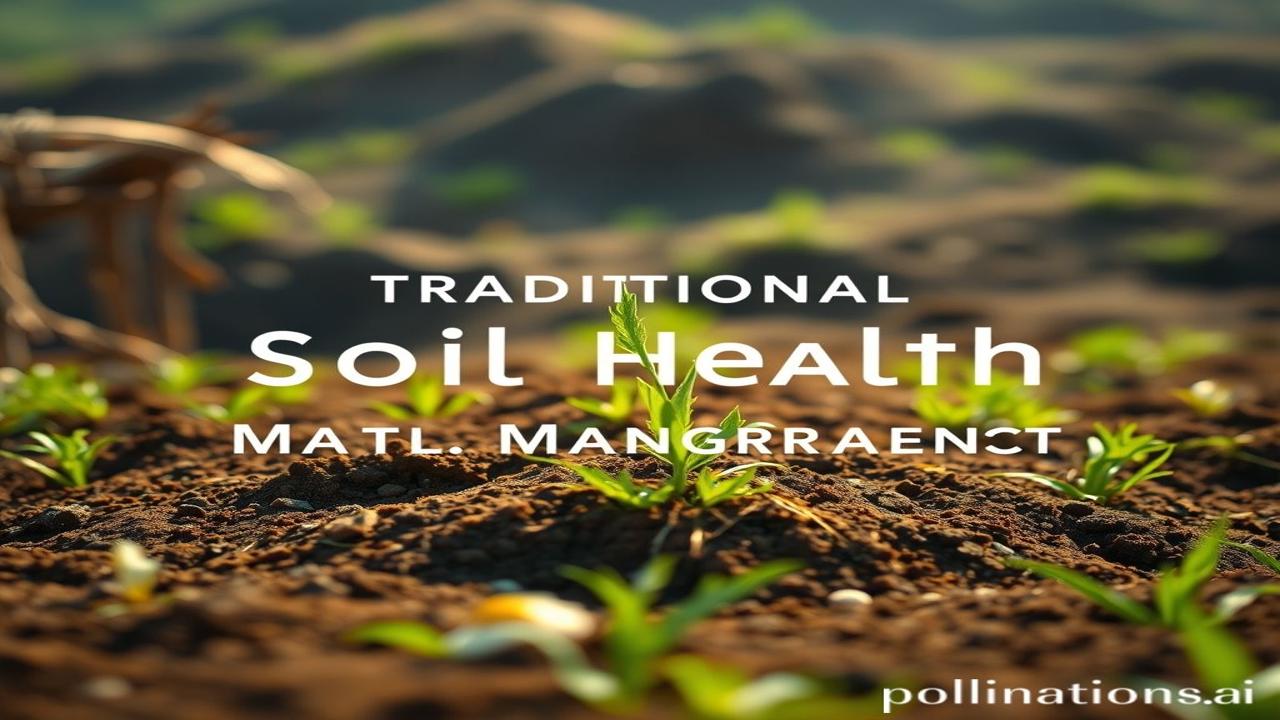Mitti Ki Kahani: Reviving Ancient Soil Wisdom for a Healthy Future
Kabhi socha hai, jab hum nange paon kheton mein chalte the, toh mitti humse kya kehti thi? What secrets did our ancestors hear whispering from the soil? Waqt ki dhool mein chhupi hai woh wisdom, wo ilm, jo aaj humein fir se khojna hai – traditional soil health management practices. Let’s unearth these forgotten treasures, shall we?
The Legacy of Our Ancestors: Understanding Traditional Soil Health
Traditional soil health management practices – basically, deshi tareeke to keep our mitti healthy and fertile – are not just ancient rituals. They are a culmination of centuries of observation, experimentation, and a deep, respectful relationship with nature. Think back to the Indus Valley Civilization, around 3300-1300 BCE. Even back then, advanced agricultural techniques were practiced, showcasing an understanding of soil fertility and water management.
These practices weren’t born out of textbooks, but out of zaroorat and anubhav. They are based on the principle of giving back to the soil what you take from it, ensuring its long-term health and productivity. This contrasts sharply with modern, often unsustainable, agricultural practices that deplete the soil of its nutrients and harm the environment. This is not just kheti-badi; it’s seva to Mother Earth, Dharti Maa.
From Fields to Festivals: A Glimpse into Rural Life
Imagine a scene from a village in Rajasthan, maybe 200 years ago. Farmers, after the kharif harvest, gathering to celebrate Anna Purna, the Goddess of Food. Ma Rukmini, dressed in vibrant bandhani, prepares bajre ki roti on a chulha fueled by dried cow dung, carefully collected from the fields. Her husband, Kishan, is busy preparing the land for the next sowing season.
Kishan practices fallowing, leaving the land untouched for a season to allow it to regenerate its nutrients naturally. He also understands the importance of crop rotation, planting different crops each season to prevent the depletion of specific nutrients. He uses organic manure – cow dung, compost, and plant residue – to enrich the soil, instead of relying on chemical fertilizers. He remembers his father teaching him about green manuring, ploughing nitrogen-fixing plants like dhaincha into the soil to boost fertility. The aroma of sandalwood incense from the family shrine mixes with the earthy scent of fresh dung, creating a uniquely Indian atmosphere.
“Kishan, mitti ka khayal rakhna, it’s our Annadata,” Ma Rukmini reminds him, her words echoing the deep respect for the land that is ingrained in their culture.
Echoes of the Past: Relevance in Modern India
Even today, in pockets across India, you’ll find echoes of these ancient practices. Look at organic farming initiatives in states like Sikkim, which have embraced traditional methods. Or consider the renewed interest in desi seeds, heirloom varieties that are naturally adapted to local conditions and require less chemical input. The growing awareness of sustainable agriculture and the need to combat climate change is driving a resurgence in these practices. Bharatiyata, the core of Indian identity, lies in recognizing and cherishing this connection with the land. These traditions are not museum pieces; they are living, breathing solutions for a healthier future.
Did You Know? Soil as a Living Entity
Log samajhte hain ki mitti sirf ek cheez hai, mati hai. Lekin asli sach yeh hai that soil is a living ecosystem, teeming with billions of microorganisms that are essential for plant growth and nutrient cycling. Traditional practices, like adding compost and manure, nurture these beneficial microbes, creating a thriving underground network that supports healthy plant life. Chemical fertilizers, on the other hand, can disrupt this delicate balance and kill these essential organisms.
Smells, Sounds, and Textures: The Sensory World of Traditional Farming
Imagine walking through a field treated with traditional methods. The air smells of fresh earth, cow dung, and blooming marigolds planted to attract beneficial insects. You can hear the buzzing of bees and the chirping of birds, indicators of a healthy ecosystem. The soil feels soft and crumbly under your feet, rich and full of life. Contrast this with a chemically-treated field, where the air is often filled with the acrid smell of pesticides, the soil is hard and compacted, and the only sounds are the mechanical drones of tractors.
A Call to Action: Rediscovering Our Roots
“Udati hui khushboo mein, mitti ki kahani hai;
Zameen se judkar hi, zindagi ki rawani hai.”
The essence of sustainable living is embedded in these time-tested techniques. Let us rediscover and embrace these traditional soil health management practices, not just for the sake of our agriculture, but for the health of our planet and the well-being of future generations. It’s time to listen to the whispers of the soil once more.
